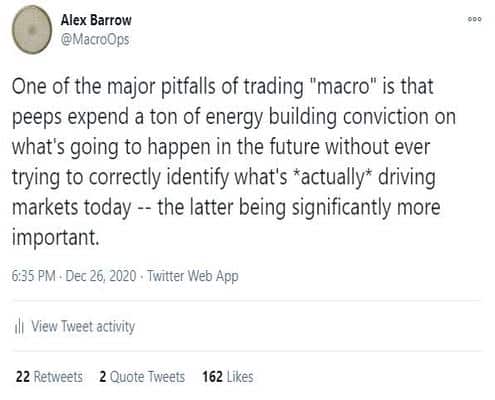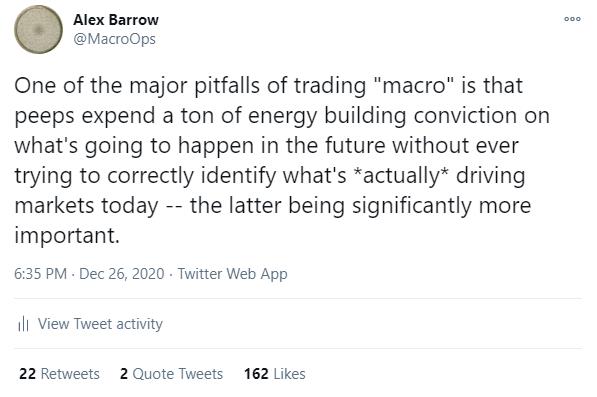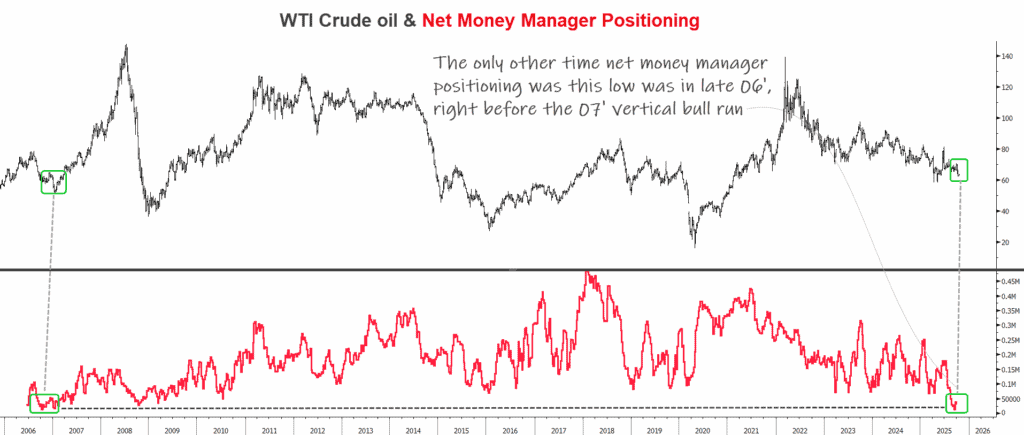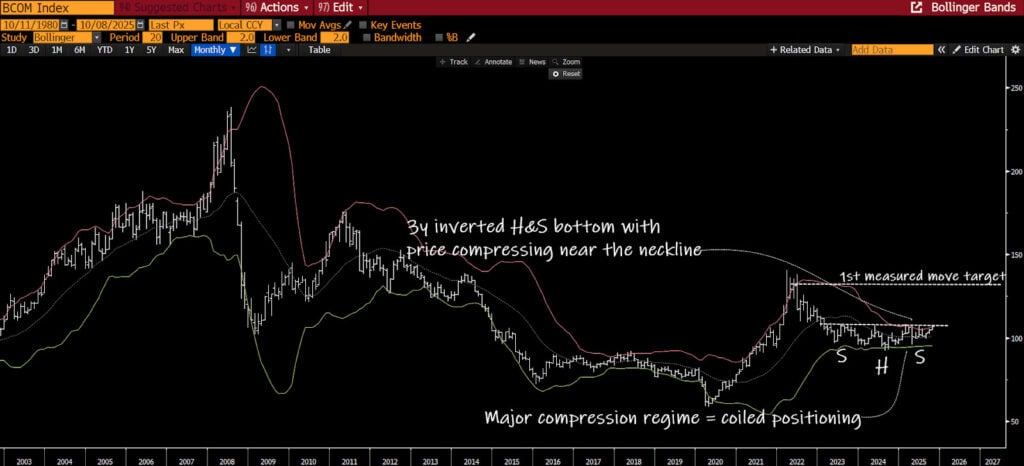We’re cognitively wired to latch onto single or binary outcomes when thinking about the future. Reality is much messier than that. “Man Plans and God laughs” as the saying goes.
This is why we don’t care so much for the tradition of making annual market predictions about the coming year. They’re unproductive in the least and at worst, detrimental to our goal of playing the market we’ve got instead of the one we wish we had. Plus, haven’t you noticed that those who speak loudest on what’s to come, are almost always those who’ve been most wrong about what’s just passed?
“An economist is an expert who will know tomorrow why the things he predicted yesterday didn’t happen today” ~ Laurence J Peter
Dunning-Kruger is a hell of a drug, I get it…
Anywho, at MO we find it much more constructive to focus on what’s actually driving markets today versus playing craps on where the S&P will be in 9-month’s time.
This is because in markets, as in all complex systems, initial conditions matter… they matter a lot. Economies are big lumbering beasts, capital flows persistent rivers, policymakers plodding geriatrics. The underlying drivers of a market cycle rarely change. But our perceptions and narratives spun to try and explain them do, and sometimes quite rapidly so.
Here’s the kicker though… most spoon-fed narratives are wrong. They’re the fast-food of the common knowledge game; popular with the masses, great with ketchup, and terrible for your (financial) health. Going back to initial conditions for a second. Trends in motion tend to stay in motion — you know, Newton and all that. But sometimes major phase shifts do occur and recalibration is needed.
You could say that 2020 was a year of major phase shifts. Some recalibration is certainly needed. The game has changed and in some big ways to boot. But, also, some of the key drivers have stayed quite the same.
In the following series of daily posts over the next five days, we’re going to run through our initial conditions. We’ll cover the major phase-shifts and the riveted trends. And through this exercise, we won’t arrive at a prediction for the 10yr yield in November or the price of TSLA stock come summer. But we will be able to stand on firmer ground in knowing, within reason, what’s driving prices today as well as what will likely be driving them tomorrow.
We’ll be able to then make probabilistically weighted bets. Understand what matters and what to look out for. And adjust fire when needed. It’s like what that author guy said… you know, the one who wrote about angry grapes:
“… to find where you are going, you must know where you are.” ~ Steinbeck
This may be less sexy, but it’s more profitable. And that’s what we care about. We’re fine not getting style points, as long as we bring home the risk-adjusted bacon at the end of the day. We’re big bacon eaters at MO.









